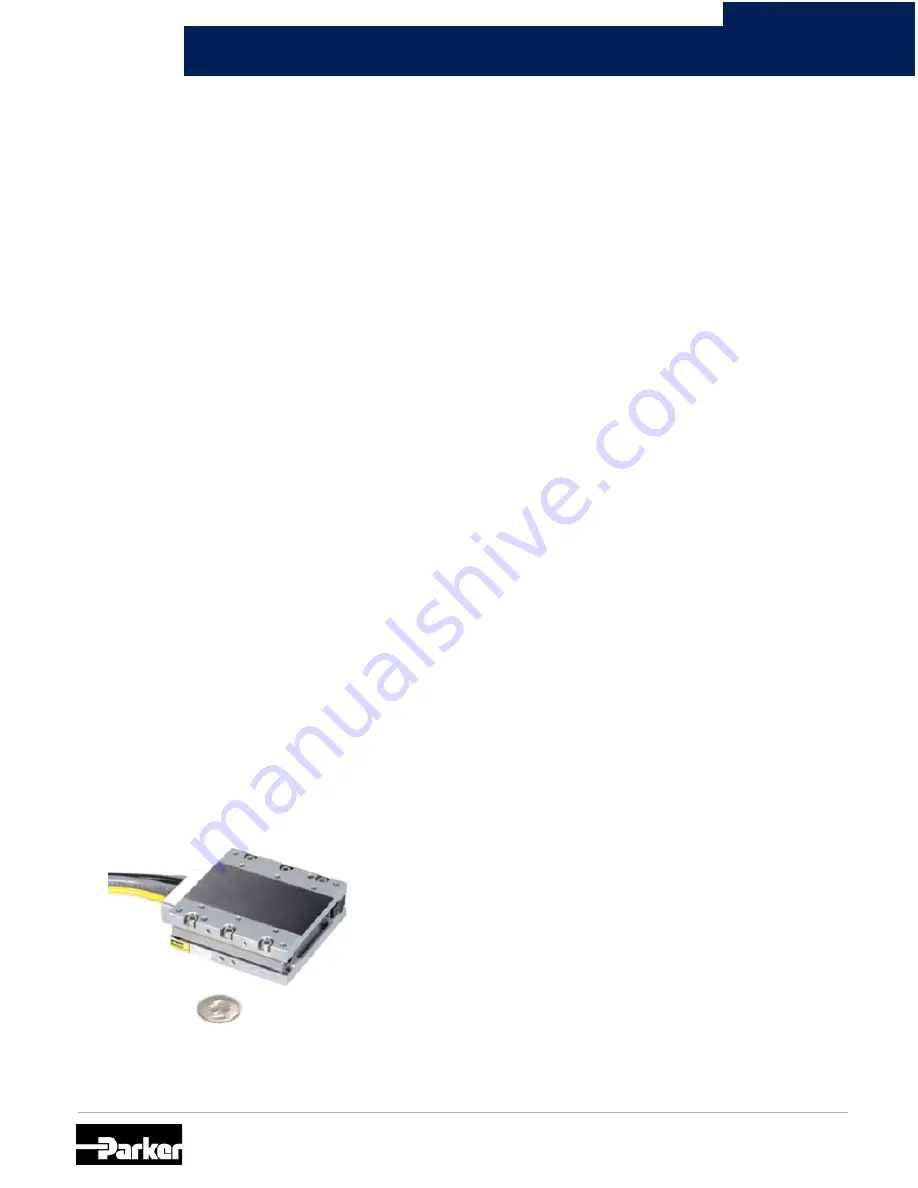
www.parkermotion.com
Parker Hannifi n Corporation
Electromechanical Automation Division
9
Engineering
Reference
Fig. 20: MX80L Miniature Linear Motor Stage
5.0 Packaged Linear Motor Positioners
As we have learned here, there are a lot of elements that affect precision
in a linear motor system. Accuracy is affected by the bearing technology,
structural stability, mounting and precision of the feedback system, and
the capabilities of the controller. In addition, other variables such as
mechanical stiffness and vibration can play a large part in the overall
error budget of a machine.
As a result, it takes a reasonable amount of expertise to integrate all the
components into a precision linear motor system. Many machine builders
and laboratory equipment users tend to have expertise in their particular
processes rather than in the integration of components. In addition, many
systems integrators do not have the time to model, analyze, and
implement linear motor designs.
For these reasons, several designers have chosen to purchase pre-
packaged, pre-engineered linear motor positioners. By leaving the design
and integration work to their vendors, they can deliver cost effective
precision motion control solutions to their customers in an extremely
short time to market. Components are performance matched for fast
response, high acceleration, smooth translation, high velocity, and
quick settling time. In addition, positioners can have a variety of fl exible
connectorization options, cable tracks, and mounting options – including
multi-axis compatibility.
Parker offers a variety of packaged linear motor positioners to fi t most
any application.
• Industrial-grade positioners for high force, high motion dynamics,
and high precision
• Precision-grade positioners for extremely high positional accuracy
• Miniature precision-grade positioners for lab automation, photonics,
electronics and other applications requiring high accuracy in a small
form
factor
6.0 Linear motors compared against other technologies
It has been well established that linear motors offer the ultimate in high
dynamics and high precision. However, many machine builders have
cost sensitive budgets and will often look to common rotary-to-linear
technologies to solve their positioning needs. This section will take a
hard look at these competing technologies and will show the long-term
benefi ts switching to linear motors.
6.1 Belt Drives
Belts and pulleys are the workhorses of the automation world. They
provide high speeds and reasonable positioning repeatability for an
economical component cost. But there are inherent limitations to using
belt drives. A belt drive system will typically consist of the following
components:
• High tensile strength belt
• Pulleys
• Gearbox, for inertia matching
• Motor and coupling
• Carriage attached to belt
• Roller bearings or slider element
All the torsional windup, backlash, and belt stretching of these
components contribute to inaccuracies in the system. Typical repeatability
of a belt drive system is around ± 0.2 mm whereas repeatability for a
common linear motor system can be ± 1µ. Even then, the belts must be
optimally tensioned and the bearings preloaded. Also, the feedback is
connected to the motor and not the load. This contributes to even further
inaccuracies in the system.
Additionally, all of these components are “spring like” by nature and
cause ringing and delays in settling time. So while belt drive systems
can operate at high speeds, they can be diffi cult to tune for dampening
and quick settling. This problem only gets worse at longer lengths, as
belts tend to sag the longer they have to span. Eventually, the belt drives
become limited in how long they can travel due to the unavoidable sag.
Finally, belt-driven systems can be maintenance intensive. Belts can lose
tensioning over time and even skip teeth. Sliding bearings can break
down. Couplings can slip or be misaligned. All of these problems force
the user to shut down valuable production time in order to maintain the
actuator.












